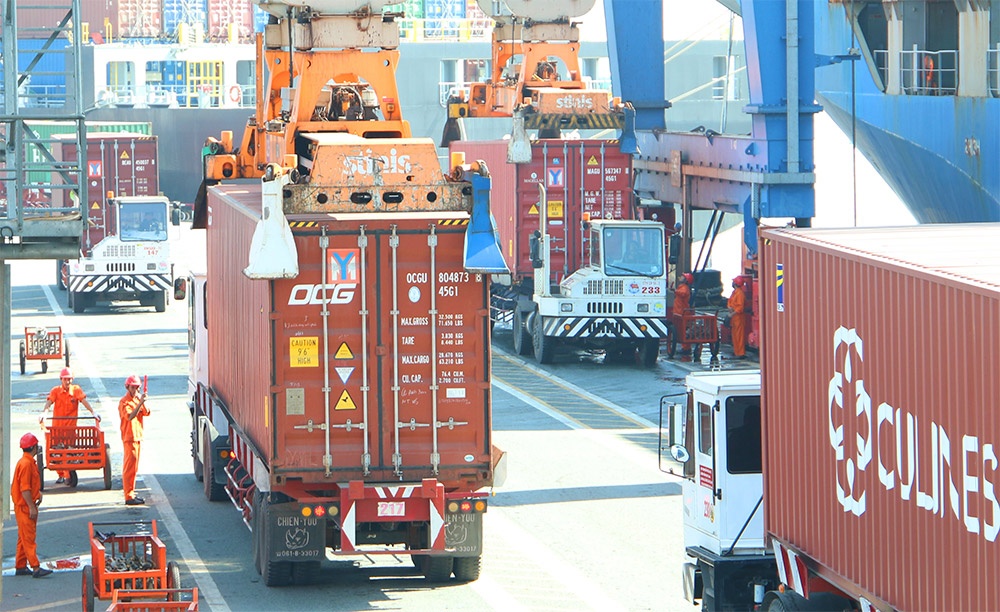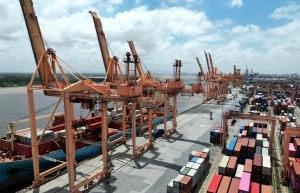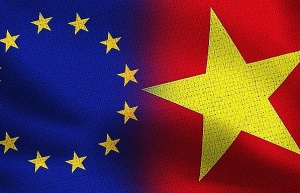Strong FTAs are main path to prosperity
 |
| Strong FTAs are main path to prosperity |
Vietnam’s economy is projected to grow by 6.1 per cent in 2024, and 6.5 per cent in both 2025 and 2026, up from 5 per cent last year, according to the World Bank.
This growth will be driven by a rebound in manufactured exports, tourism, and recovering consumption and business investment, according to the World Bank’s latest Taking Stock report released last week. The report highlights the resilience of the Vietnamese economy despite rising global challenges.
“During the first half of the year, Vietnam’s economy benefited from the rebound in export demand,” said Sebastian Eckardt, practice manager for Macroeconomics, Trade, and Investment at World Bank East Asia and Pacific.
The World Bank noted that merchandise trade was more robust than anticipated in H1 2024, fuelled by stronger demand from US consumers, with exports and imports growing by 16.9 and 17 per cent on-year, respectively. While the net export contribution to GDP remains modest, expanding trade was accompanied by higher industrial production and employment, leading to an uptick in investment and consumption growth of 6.7 and 5.8 per cent on-year in H1 2024, respectively.
Expanding trade
In a report submitted to the government in August, the Ministry of Industry and Trade (MoIT) emphasised the urgent need for Vietnam to expand export markets and leverage economic linkages through free trade agreements (FTAs).
“We must increase export promotion activities in key markets, particularly taking full advantage of incentives from FTAs such as the Comprehensive and Progressive Agreement for Trans-Pacific Partnership, the EU-Vietnam FTA, and the Regional Comprehensive Economic Partnership,” the report said. “We must also accelerate negotiations, finalisation, and approval of new FTAs, especially with Israel and the UAE, to diversify markets, supply chains, and boost exports. Also, we will continue to support enterprises in trade promotion in new markets.”
Vietnam’s goods trade turnover has seen substantial growth over the past 14 years, according to the General Department of Vietnam Customs. Data it released last week showed that from January to August 15, the total trade turnover is estimated to have reached $473.33 billion – up 17 per cent on-year. This includes nearly $244.41 billion in exports, up 16 per cent, and $228.92 billion in imports, up 18 per cent. The total trade surplus stood at $14.5 billion.
The government has set a goal of achieving a total export turnover of $376 billion in 2024 – up 6 per cent from 2023’s figure of $354.7 billion, with total import turnover expected to hit $352.5 billion – up 8 per cent from $326.4 billion last year. The trade surplus target is set at $23.5 billion.
According to the MoIT, improvements for boosting industrial production and trade are expected to persist until the end of the year. “The global economy and trade are showing signs of recovery, and Vietnam’s exports are forecast to continue seeing positive growth. Global trade is predicted to double in 2024 thanks to reduced inflation and the accelerated growth of the US economy,” the MoIT said.
Furthermore, Vietnam’s material imports for export-oriented production have increased significantly, indicating that the country’s goods exports will continue to rise in the coming months. Regarding import structure, 90 per cent of the economy’s total import turnover since the beginning of the year has been for goods and materials required for domestic production, such as machinery, equipment, tools, and materials. Their total value is estimated at more than $190 billion, up 19 per cent compared to the same period last year.
According to the World Bank, Vietnam has been a development success story. Economic reforms in the 1980s, coupled with favourable global trends, have propelled Vietnam from one of the world’s poorest nations to a middle-income economy in just one generation. GDP per capita has increased six-fold in less than 40 years, from less than $600 per person in 1986 to almost $3,700. Poverty rates declined from 14 per cent in 2010 to 4.2 per cent in 2022.
“Thanks to its solid foundations, the economy has proven resilient through various crises,” the World Bank said. “Real GDP growth is expected to strengthen over the next three years.”
Stronger integration
In June, at a World Economic Forum event in China, Prime Minister Pham Minh Chinh highlighted Vietnam’s success over the past four decades, attributing it to reform, innovation, and integration.
“Today, we proudly stand among the world’s top 40 economies and rank as one of the top 20 trade and investment partners globally. With 16 FTAs and diplomatic relations with 193 countries, Vietnam’s economy surged to $430 billion in 2023, with GDP per capita reaching $4,300 and foreign direct investment (FDI) registering a record $36.6 billion,” PM Chinh said.
Featuring tariff reductions, market barrier removal, and other benefits, FTAs have deepened Vietnam’s international economic integration and attracted more investment.
Following Vietnam’s accession to the World Trade Organization in 2007, FDI inflows surged. In 2008 alone, total registered FDI in the country exceeded $70 billion.
The Ministry of Planning and Investment reported that total registered FDI into Vietnam reached over $487 billion as of July 20. Between January and July 20, newly registered, newly added capital, and capital contributions and stake acquisitions hit $18 billion, up nearly 11 per cent on-year.
In 2024, the economy grew 5.66 per cent in Q1 and 6.93 per cent in Q2, with an H1 growth rate of 6.42 per cent. The government expects the economy to grow by about 7 per cent this year. “Vietnam is lauded as a model for healing the wounds of war. We have moved beyond the past, embraced differences, and looked to the future to forge friendships from former adversaries. All UN Millennium Development Goals were achieved,” PM Chinh said.
The World Bank also noted that while the economy has not yet returned to its pre-pandemic growth path, enhanced public investment would provide short-term stimulus and address emerging infrastructure gaps in energy, transport, and logistics – areas that are increasingly constraining growth.
The World Bank identified several megatrends shaping Vietnam’s future: a rapidly ageing population, declining global trade, environmental degradation, climate change, and the rise of automation. To meet these challenges, Vietnam must dramatically improve its implementation of policies, particularly in finance, environment, digital transformation, poverty and social protection, and low-carbon infrastructure. “Adapting to climate impacts and pursuing a growth strategy that steers the economy away from carbon-intensive production will help Vietnam achieve its climate objectives while expanding its GDP per capita by around 6 per cent a year – the average rate needed to become a high-income country by 2045,” the World Bank said.
| Jonathan Pincus, senior international economist UN Development Programme in Vietnam Many developing countries have enjoyed episodes of high growth, but few have managed like Vietnam to sustain economic growth over three decades. GDP growth has increased at an average annual rate of 6.5 per cent since 1990, propelled by export growth averaging nearly 20 per cent per year. Routinely listed among the poorest countries in the world in the 1980s, Vietnam has virtually eliminated extreme poverty and made rapid progress in reducing multidimensional poverty. A strategy of international integration in goods and services, but cautious financial integration, has supported growth while helping the country avoid the worst effects of financial crisis. Vietnam now faces external and domestic headwinds. Rising protectionism in the West is a potential threat to Vietnam’s export growth and could affect inflows of foreign investment if East Asian production networks come under pressure. Domestic challenges include the negative impact of climate change, particularly in the Mekong Delta, a shortage of skilled labour in technologically advanced fields, and underinvestment in higher education, research, and innovation. Vietnam’s investment needs far exceed the mobilisation capacity of domestic banks, which are undercapitalised and held back by gaps in internal governance. The transition to renewables, which is needed for energy security and to sustain export growth, will require a massive investment effort, far exceeding the capacity of domestic banks and the availability of foreign savings. |
 | FTA quality improvement promotes exports: Experts Enhancing the quality of the 16 free trade agreements (FTA) that Vietnam has signed with partners will be a helpful measure to aid domestic firms in facilitating exports in the coming time, according to experts. |
 | Latest EU business survey highlights benefits of trade deal As the EU-Vietnam Free Trade Agreement (EVFTA) approaches the fourth anniversary of its entry into force on August 1, a survey by the European Chamber of Commerce in Vietnam (EuroCham) painted a nuanced picture of the agreement's impact. |
 | EVIPA requires methodical approach The European Commission is set to urge EU member states to expedite the ratification of the EU-Vietnam Investment Protection Agreement to enhance investment flows. |
What the stars mean:
★ Poor ★ ★ Promising ★★★ Good ★★★★ Very good ★★★★★ Exceptional
Related Contents
Latest News
More News
- KK Group opens global flagship store in Ho Chi Minh City (January 19, 2026 | 11:52)
- Gia Lai draws over $1bn in new investment so far this year (January 19, 2026 | 11:50)
- Unlocking capital flows for strategic and suitable projects (January 18, 2026 | 09:00)
- ACV begins cargo terminal construction at Danang Airport (January 17, 2026 | 15:57)
- Viettel starts construction of semiconductor chip production plant (January 16, 2026 | 21:30)
- Bel expands Vietnam production with $19.7 million investment (January 16, 2026 | 16:07)
- ASML signals long-term commitment to Vietnam (January 16, 2026 | 12:00)
- Ho Chi Minh City starts construction of four key infrastructure projects (January 15, 2026 | 17:22)
- PIDG invests with AquaOne to expand Xuan Mai’s treated water supply to Hanoi (January 15, 2026 | 11:16)
- Vietnam ranks 38th in global AI adoption (January 14, 2026 | 16:01)

 Tag:
Tag:





















 Mobile Version
Mobile Version